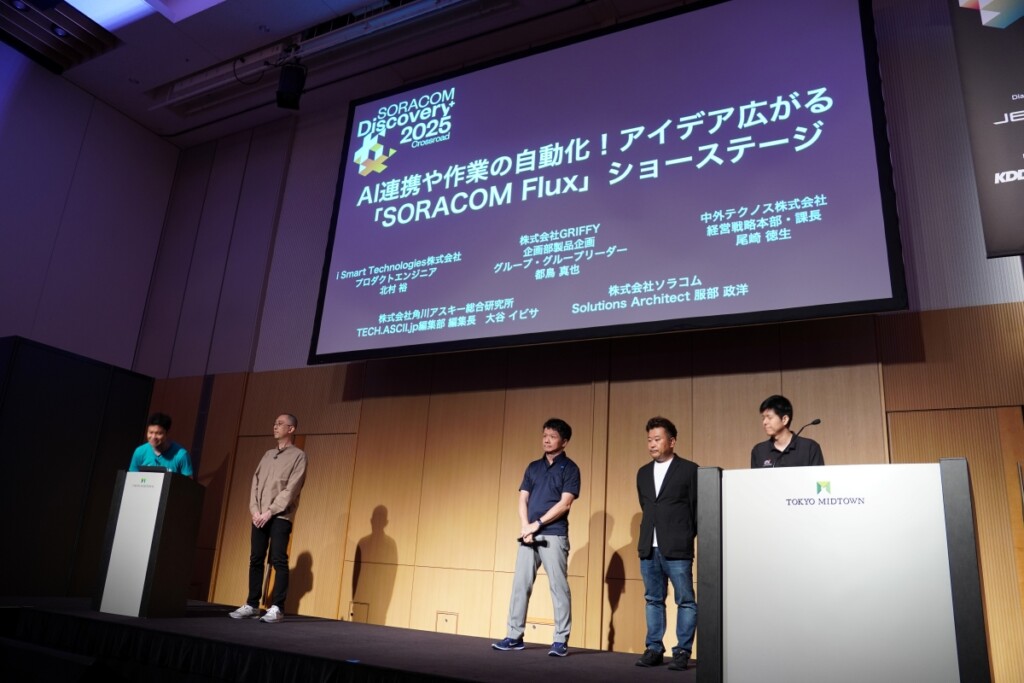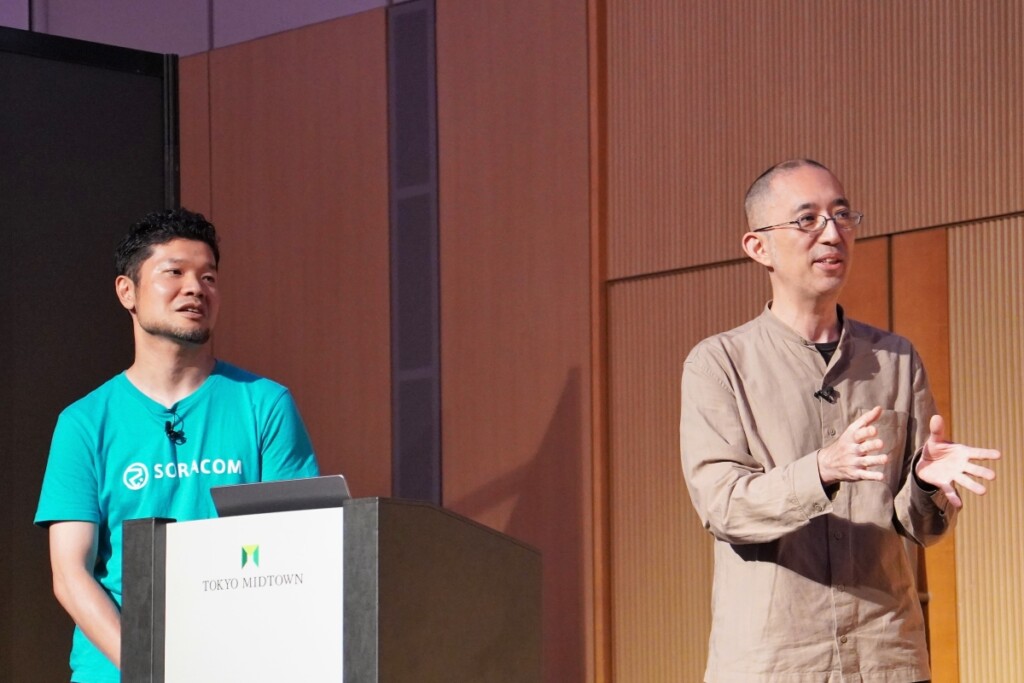How Soracom Flux Powers Real-Time Service Decisions Through AIoT Automation

TL;DR
- Soracom Flux empowers non-engineers with a low-code IoT app builder that accelerates IoT automation, including for companies with real-time decision-making.
- AI integration turns IoT data into action, from vehicle measurement to real-time energy-saving alerts.
- Customer stories prove the impact, with fast development cycles, reduced costs, and scalable adoption across industries.
Soracom Flux: A Low-Code IoT App Builder for Real-World Challenges
This article was originally reported and written by ASCII.jp and has been re-edited and published with the company’s permission.
The rise of IoT automation has changed how businesses collect and act on data. But for many organizations, the barrier to innovation has been development speed, cost, and the need for specialized engineering skills. At Soracom Discovery 2025, a panel of Soracom customers spoke about the power of Soracom Flux, a low-code IoT app builder, discussing how it is breaking down these barriers by enabling teams – including sales and operations staff – to build and deploy IoT apps without having to write extensive code.
From garbage container monitoring to energy conservation practices, companies are already demonstrating how Soracom Flux helps them combine IoT data with AI-driven insights to automate processes and deliver measurable results.

GRIFFY: Sales-Led IoT Development in Construction
GRIFFY, a digital transformation company in the construction industry, showcased how Soracom Flux empowered their sales staff to directly create IoT automation apps in response to customer needs.
One such app tackles the problem of vehicle measurement inside tunnels undergoing construction. Traditionally, multiple workers would have to visually assess trailers to ensure they fit within confined tunnel spaces. With Flux, however, sales staff built an app that uses SoraCam cameras and AI to automatically measure vehicles and project results on VR signage.
Crucially, the solution was designed around Soracom Harvest, a Soracom service which stores the local camera images. Each time Harvest receives a new update, Soracom Flux is triggered to run an AI model that calculates vehicle length. The result is then displayed on-site through Soracom Lagoon dashboards and projected onto VR signage, giving drivers and site staff instant feedback.
“The field places particular importance on speed, so we were looking for a way for sales staff to directly build the system,” said Shinya Todori, Group Leader at GRIFFY.
Another solution addressed snow removal decisions in heavy snowfall areas. Instead of relying on inconsistent visual assessments, Flux apps utilized AI image recognition via SoraCam cameras to trigger automated notifications whenever snow accumulation crosses thresholds.
“SoraCam and Flux have enabled us to promote the construction of sales-led systems. As development costs have been reduced, we have also received more orders for other products,” Todori added. “On the other hand, the accuracy of AI judgments is heavily dependent on prompts, so we would like to share our know-how within the company and continue to develop better products.”
In a writeup for the event, ASCII’s Ibisa Otani praised the initiative: “This is truly the democratization of technology. The interesting thing about Flux is that you can get by with trial and error even without a dedicated system.”
i Smart Technologies: Driving Energy Efficiency with IoT Automation
For i Smart Technologies, known for boosting annual profits by ¥1 billion for its parent company Asahi Tekko, the challenge was helping teams go beyond just ‘visualizing waste’ in energy use. Their monitoring platform iXaxs had already reduced electricity consumption for Asahi Tekko by 42%, but maintaining energy-saving habits on-site required real-time awareness and action.
Using Soracom Flux, the company built an app that integrates IoT automation with AI to deliver:
- Real-time audio alerts when machines consume excess power.
- AI-generated improvement suggestions based on historical operation and power data.
- Customizable criteria so that improvement proposals and thresholds can be set locally.
“Not many companies see results just by making things visible,” explained Yutaka Kitamura, Product Engineer at i Smart Technologies. “The strength of Flux is that the frequency of improvement proposals and the criteria for judgment can be freely set on-site.”
When asked if the system could have been built without Flux, Kitamura emphasized accessibility: “If it had only been used by engineers, there were other options. But considering that we would ultimately want non-engineers to use it as well, Flux was the only choice.”
Chugai Technos: Automating Visual Inspections with AI and IoT
Perhaps most interesting is Chugai Technos, which demonstrated how Soracom Flux can simplify some of the most repetitive – and critical – on-site tasks: monitoring garbage containers and detecting white smoke emissions.
Traditionally, these inspections required constant human surveillance, leading to inconsistent results and high labor costs. With Flux, Chugai Technos combined IoT cameras and AI image recognition to automatically identify when garbage containers reached capacity or when abnormal smoke emissions appeared. Once detected, the system instantly notified staff, allowing them to take corrective action before issues escalated.
By pairing visual inspection data with Flux’s automation engine, Chugai Technos not only streamlined reporting but also enabled predictive responses. Instead of waiting for problems to be noticed manually, the system created a proactive loop that improved safety, compliance, and operational efficiency.
As Otani put it: “I think the high versatility of visual inspection work resonated with people. The expression, ‘We have a robot with eyes and a brain,’ is simple and easy to apply to actual work. It was a presentation that led to many realizations.”
This ability to automate routine inspections with AI illustrates how Soracom Flux helps organizations move beyond passive data collection to active, AI-driven IoT automation that scales across industries.

The Future of AI-Enabled IoT Automation
These real-world stories highlight the transformative potential of Soracom Flux as a low-code IoT app builder. By enabling non-engineers to harness AI and automate processes, Flux accelerates innovation across sectors, from construction to manufacturing to environmental monitoring.
As IoT deployments grow more data-rich and complex, the ability to quickly build, test, and refine applications with Flux will be key to unlocking AI-driven efficiencies at scale.






